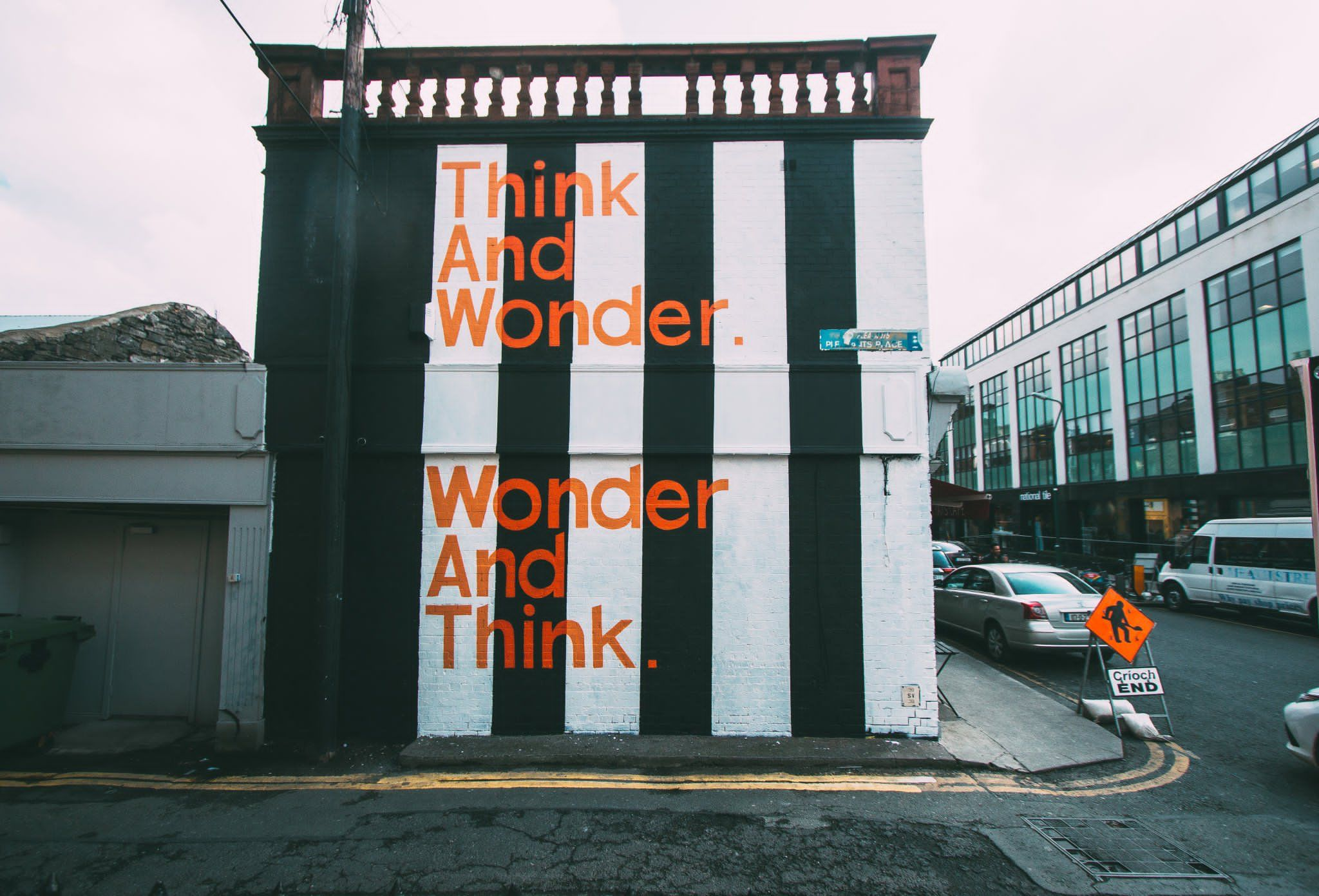In 2010, I went to Smithfield in Dublin to film a package for a TV show called NAMA-land.
I was there to see one of Paddy Kelly’s buildings — a big block of apartments facing onto the square, with space for retail units on the ground floor.
By 2010 the building had been brought into NAMA, and was in receivership. In the concrete void at ground floor level, intended for retail, an artistic collective called The Complex had set up shop. On the day of my visit, trapeze artists were dangling from the ceiling, practising their stuff.
Places like The Complex were common in Ireland’s short-lived creative flourishing of 2008-2016. Celtic Tiger era construction had created lots of space, and the recession had kept commerce at bay.
Artists and creatives took over the empty nooks and crannies. Odd little shops opened up. Late at night, there were parties (both official and unofficial) in warehouses and other unused spaces.
For a long time, Irish cities like Dublin were known as culturally interesting places. Economic backwaters, maybe. But quirky and cultured with it.
It would be hard to describe Dublin that way today. The city is rich — and increasingly bland. The Complex is long gone from that space now. It’s been replaced by a supermarket.
Earlier this week, at a blacked out car showroom in Harold’s Cross in Dublin, Tom met with representatives of SUBSET, an artistic collective currently being prosecuted by DCC over unauthorised street murals. A representative of the group said:
“This is about control more than anything else. Control by DCC of what artists in Dublin are allowed to create (on murals). It can feel like we are in an episode of Fr Ted at times it is so ridiculous what is happening, but it is not, it’s so serious. It’s a joke.”
For artists, it often comes down to physical space. Artists benefit from being in a big city, close to other artists. But creative pursuits often don’t pay well. So within the city artists need cheap places to live, as well as cheap commercial units to work.
There’s so much money in Dublin, and Ireland’s other cities, that there’s simply no space for culture. Workers in higher-paid industries bid up the price of homes. And businesses serving those workers bid up the price of commercial units.
Where do artists do well? Berlin is maybe the best example. That’s because it had been a big capital city, but its biggest industries fled to West Germany after the war. So Berlin has the bones of a big capital city, without much capital-city commerce. Artists have moved in to fill the space.
It’s not just a Dublin problem. London, New York, San Francisco — all these cities are in clear decline as cultural hubs. They’re now more rich, safe, and bland than they were 20 years ago. And Berlin is on the same trajectory.
What’s to be done? The only options are to subsidise artists directly, or to make space for them. There’s a place for subsidies, but state-sponsored creativity can’t be the entire answer. It would be better if artists didn’t need subsidies to flourish – the way they did during the recession.
Some other countries do this well. Look down the alleyway of a Japanese city and you’ll see shebeens, galleries, and all sorts of odd stuff. In Tokyo, homeowners are entitled to run small businesses — even bars! — from their homes, without council approval. And on the streets of many European cities, you see lots of small ground-floor units over multi-story apartment blocks. The units have more interesting offerings than you see in Ireland.
What these places have in common is much higher density, more ground floor units, and more construction. Where space is abundant, creative people find a way to make it work.
Just before James Joyce left Ireland for good in 1904, he wrote “Ireland is the old sow that eats her farrow”. He was getting away from Ireland’s stultifying culture of the time. It would be a shame if 100 years later, with all the resources at our disposal, we repeated the mistake.
*****
Elsewhere this week: The curious insolvency of a Dublin transport company. Months ago, Thomas learned about disputed figures at an insolvency hearing involving a North Dublin logistics company. Since then he’s followed the trail left by the two company directors, from Ireland to the UK and as far as Mexico. The directors have started more than 30 companies or business names over the last 30 years. Each of them has failed.
Stephen began a new series looking in detail at Ireland’s precarious young generations. Because of a historical peculiarity — the Land Acts in the 1900s — Ireland’s welfare state was not designed to support urban workers without assets. And thanks to the housing crisis, many of the young are in exactly that position. Where are we headed? Stephen said:
“The state will be forced by demographic pressure eventually to make a choice between supporting the interests of the upper-middle classes, or taxing them heavily to support the lower middle classes, or to support the upper middle classes, by coming up with reasons not to tax their wealth.”
I published a series of stories on Ireland’s most recent tax take. I learned that, despite their global commercial success, the aircraft lessors are a relatively small contributor to the national coffers. The key point is that Ireland’s public finances are utterly dependent, not just on multinationals, but on a subset of giant multinationals. It’s not a comfortable position to be in.
Finally, Thomas met with Laura McCoy, Irish lead for Elysian Capital. McCoy is part of the private equity industry that is swarming across the country, looking for Irish businesses to buy up, combine, grow, change, and ultimately sell on. She explained to Thomas why Ireland is attractive, and what she looks for in a target company.


